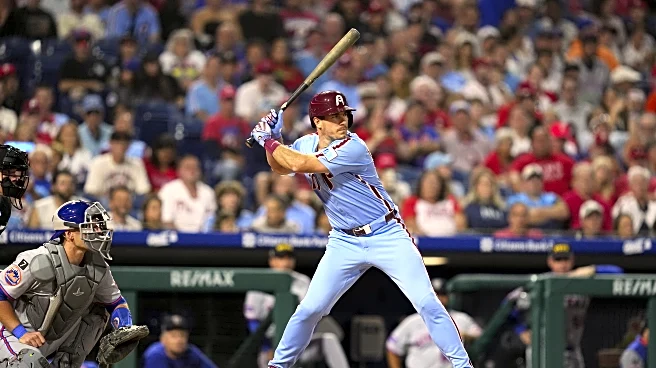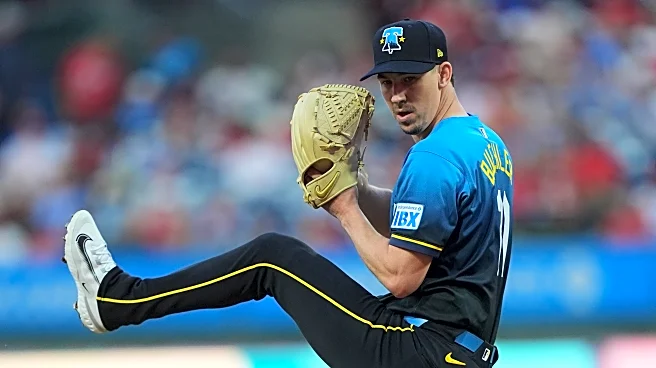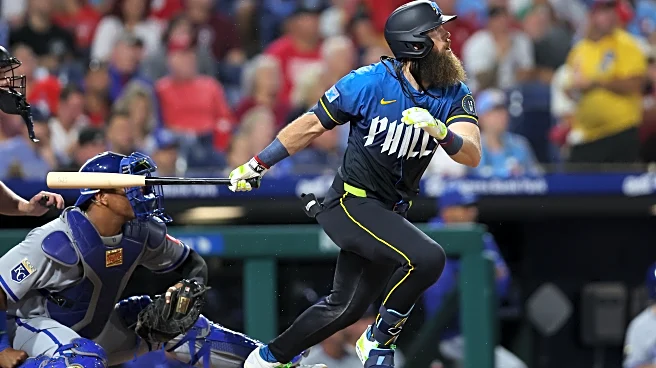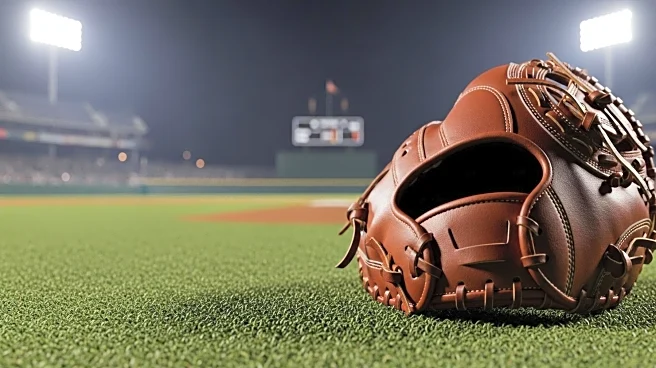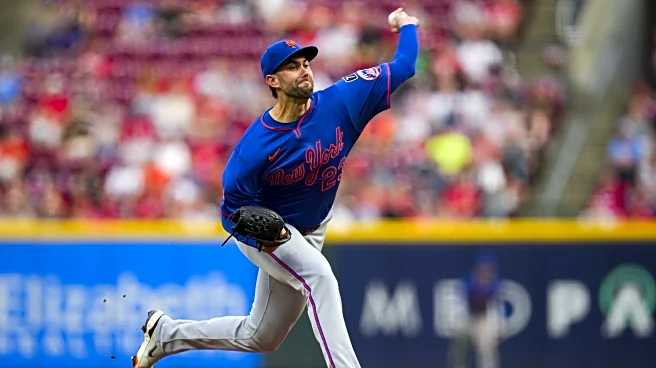Catching is generally a passive art. The pitcher initiates. The catcher receives. Even in the most active aspect of the position— the attempt to thwart basestealers— the catcher is merely responding to the action started by the baserunner. This does oversimplify (notably, the catcher helps the pitcher decide which pitch to throw to initiate the action). But for the most part, the catcher takes a back seat to the true drivers of the action: the pitchers and the hitters. It is only when the catcher becomes
a hitter himself that he gets to take a more active role.
When J.T. Realmuto has taken that more active role as a batter this year, he’s been rather good. His slugging percentage is down from last year (.393, from .429), but his average and on-base percentage have been maintained. And those big-picture numbers obscure the true nature of his performance in recent months: As TGP’s own John Stolnis noted, Realmuto’s sluggish first few months of the season have given way to much more impressive performances in the summer. He slugged .519 in July and .443 in August (though only .250 so far in September). At 34, Realmuto is still bringing a great deal to the plate. He doesn’t seem to be slowing down too much.
Except, in some sense he is. His bat speed is down by a full mile per hour: 73.2 last year, 72.1 this year. That may not sound like a lot, but it is: he’s dropped from the 70th percentile in bat speed to the 48th. And his fast swing rate— defined as the proportion of swings that reach 75 MPH or greater— has dropped from 35.7% to 26.5%. Correspondingly, his Hard Hit percentage has dropped, sitting at 45.7% from 46.6% last year. His barrel % is down (8.8% from 10.4%), putting him in the 50th percentile after seasons where he ranked in the 80th, 74th, and 71st. The percentage of his contact that Statcast records as solid has dropped too, to 6.5% from 9.7%.
That all seems rather odd: if he’s swinging slower and making solid contact less frequently, how has he maintained his offensive performance? Hitting isn’t just about bat speed of course; it’s also about what pitches you swing at, and how you attack them. And Realmuto has made some changes there as well. If catching is a passive art, then Realmuto has taken some inspiration from his backstop work for his new approach with the bat. He’s been more patient at the plate, reducing the number of first pitches he swings at by 5%, and reducing his zone swing rate by 4%. He’s making contact more often than last year on the pitches in the zone that he does swing at. He’s actually chasing a tad more than he did last year, but he’s offsetting that by making more contact on the pitches he chases. His whiff rate is down too. He’s no Luis Arraez (who is?) or even a Bryson Stott, but he’s become a more selective hitter.
All of this has helped him offset that slower bat. Statcast keeps track of the proportion of a batter’s swings that are squared-up, which is to say having a combination of bat speed and contact quality that maximizes the available exit velocity. With a slower bat you might expect Realmuto to square up fewer swings. But he’s not: his squared-up rate has gone up slightly from last year, to 23.1% of his swings from 22.5%. His average exit velocity is actually up from last year. Sure, only by 0.7 MPH— but in the context of a slower bat, that’s still rather impressive. And it can only be the result of better contact.
But wait, you say. Didn’t you just say that Realmuto is making solid contact less often than last year? And that’s true: 9.7% of his contact was solid last year, and this year only 6.5% is. But he’s also making weak contact less often. Last year 5.7% of his contact was weak, and this year only 2.6% is. More of his contact is ending up somewhere in the middle (to be precise, in the zones that Statcast defines as Flare/Burner and Under). That evens out such that he’s squaring up the ball a tad better than before, even with the decline in bat speed.
To be clear, the news for Realmuto is not entirely positive. His power is down. His ISO sits at .130, which would be the lowest he’s posted since 2016. He’s been oddly passive on pitches in the heart of the plate, where you’d hope he’d feast: last year he swung at 78.2% of pitches that Statcast regards as meatballs, and this year he’s swinging at only 70.4% of those. He’s swinging less in the heart of the zone, meatball or no, and correspondingly, he’s doing much less damage on pitches in the area (run value of plus nine in 2024, but only plus one this season).
These changes aren’t ideal. We’d rather have him just stay as he was in his All-Star seasons. But that cannot happen. Realmuto, like all of our heroes, is getting older. The aging is changing him. But he is not passively accepting it. Instead, he is countering those unwilling changes to his game with willing ones, such that his performance is remaining stable even as the way he achieves it is in flux. Our BCIB won’t go gentle into that good night.
